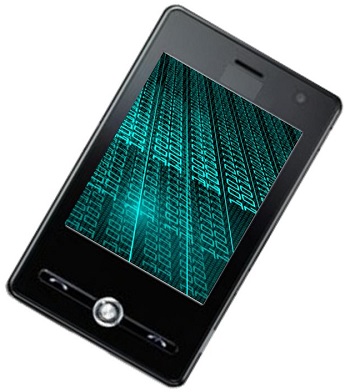It has now announced its first three games, which will be published within the first quarter of this year.
Channel 4 has now announced the first three games that will make up its initial mobile games offerings, and that they will arrive on the market during the first quarter of this year by way of its new publishing branch.
The newly opened Channel 4 publishing branch is called All 4 Games and will soon release 3 apps.
The first three mobile games titles that will be seen from this publisher include: Super Arc Light, Fire Fu and Apestorm: Full Bananas. They will all be available from All 4 Games this quarter for Android and iOS based devices. To complement the announcement of the first three titles, the publishing arm has already released the descriptions and screengrabs of each of those mobile game apps.
These three mobile games titles are meant to become the foundation for what will be a much larger offering.
 This is the start of the Channel 4 strategy that has been to create a greater draw for the millennial generation while it solidifies its position as an entertainment giant in the United Kingdom. According to Colin Macdonald, the commissioner of All 4 Games, in a recent statement he made along with these announcements, “We’re absolutely delighted to be announcing our first batch of published games, as well as the exciting partnerships we’ve built in our first few months of operation.”
This is the start of the Channel 4 strategy that has been to create a greater draw for the millennial generation while it solidifies its position as an entertainment giant in the United Kingdom. According to Colin Macdonald, the commissioner of All 4 Games, in a recent statement he made along with these announcements, “We’re absolutely delighted to be announcing our first batch of published games, as well as the exciting partnerships we’ve built in our first few months of operation.”
Macdonald went on to express the pride his team has felt in working with some of the “finest mobile games development teams within the UK and Europe.” He also underscored the excitement they feel when it comes to providing those teams with a platform for using and expressing their talent within the category.
This new strategy has the potential to raise the position that Channel 4 currently holds within the industry, particularly within the digital and interactive sectors. The first three games are only the jumping off point from which they will be expanding. In fact, its intention is to provide the funding for six annual mobile games releases, which will be associated with the flagship program brands it has already established.
Security is becoming a top priority for those involved in mobile payments
China’s mobile payments sector saw dramatic growth in 2015, and this momentum may hold throughout this year. The country’s mobile technology sector has been developing very quickly, with new devices becoming available and access to the mobile Internet expanding. As more consumers gain access to smartphones, they are beginning to rely more heavily on mobile payments services. As these services become more popular, China’s regulators are beginning to focus on security issues in order to ensure the continued growth of mobile commerce.
China’s mobile population is growing quickly
The Chinese Ministry of Industry and Information Technology notes that there are more than 1.3 billion people in China with a mobile device. Many of these consumers are using their mobile devices to shop online and in physical stores. The problem, however, is that the mobile payments sector is becoming increasingly attractive to malicious groups that want to exploit consumer information. Security risks are causing concern among consumers, making them shy away from mobile payments services.
Focus on security may make consumers more comfortable with mobile payments
 A greater focus on security may ensure the continued growth of the mobile payments industry by making consumers more confident in the services they use. To ensure security, some companies involved in the mobile commerce space are beginning to use new technology to protect consumers. Biometric technology, in particular, is becoming quite popular among these companies. This technology leverages biological information, such as a fingerprint, to protect consumer information that is stored on a mobile device.
A greater focus on security may ensure the continued growth of the mobile payments industry by making consumers more confident in the services they use. To ensure security, some companies involved in the mobile commerce space are beginning to use new technology to protect consumers. Biometric technology, in particular, is becoming quite popular among these companies. This technology leverages biological information, such as a fingerprint, to protect consumer information that is stored on a mobile device.
Bringing mobile payments platforms into new service industries has become a priority
Beyond security, Chinese companies must find ways to integrate mobile payments into other service industries. This would ensure the expansion of the payments market and give consumers more access to platforms they may be interested in. As more organizations support mobile payments, both digital and physical, more consumers are likely to participate in this new form of commerce. Alibaba is expected to lead the expansion of mobile payments into new service industries with its Alipay platform and its focus on consumer security. Alipay accounts for some 400 million registered users, more than half of whom use the service quite frequently.
 This is the start of the Channel 4 strategy that has been to create a greater draw for the millennial generation while it solidifies its position as an entertainment giant in the United Kingdom. According to Colin Macdonald, the commissioner of All 4 Games, in a recent statement he made along with these announcements, “We’re absolutely delighted to be announcing our first batch of published games, as well as the exciting partnerships we’ve built in our first few months of operation.”
This is the start of the Channel 4 strategy that has been to create a greater draw for the millennial generation while it solidifies its position as an entertainment giant in the United Kingdom. According to Colin Macdonald, the commissioner of All 4 Games, in a recent statement he made along with these announcements, “We’re absolutely delighted to be announcing our first batch of published games, as well as the exciting partnerships we’ve built in our first few months of operation.”
 A greater focus on security may ensure the continued growth of the mobile payments industry by making consumers more confident in the services they use. To ensure security, some companies involved in the mobile commerce space are beginning to use new technology to protect consumers. Biometric technology, in particular, is becoming quite popular among these companies. This technology leverages biological information, such as a fingerprint, to protect consumer information that is stored on a mobile device.
A greater focus on security may ensure the continued growth of the mobile payments industry by making consumers more confident in the services they use. To ensure security, some companies involved in the mobile commerce space are beginning to use new technology to protect consumers. Biometric technology, in particular, is becoming quite popular among these companies. This technology leverages biological information, such as a fingerprint, to protect consumer information that is stored on a mobile device.